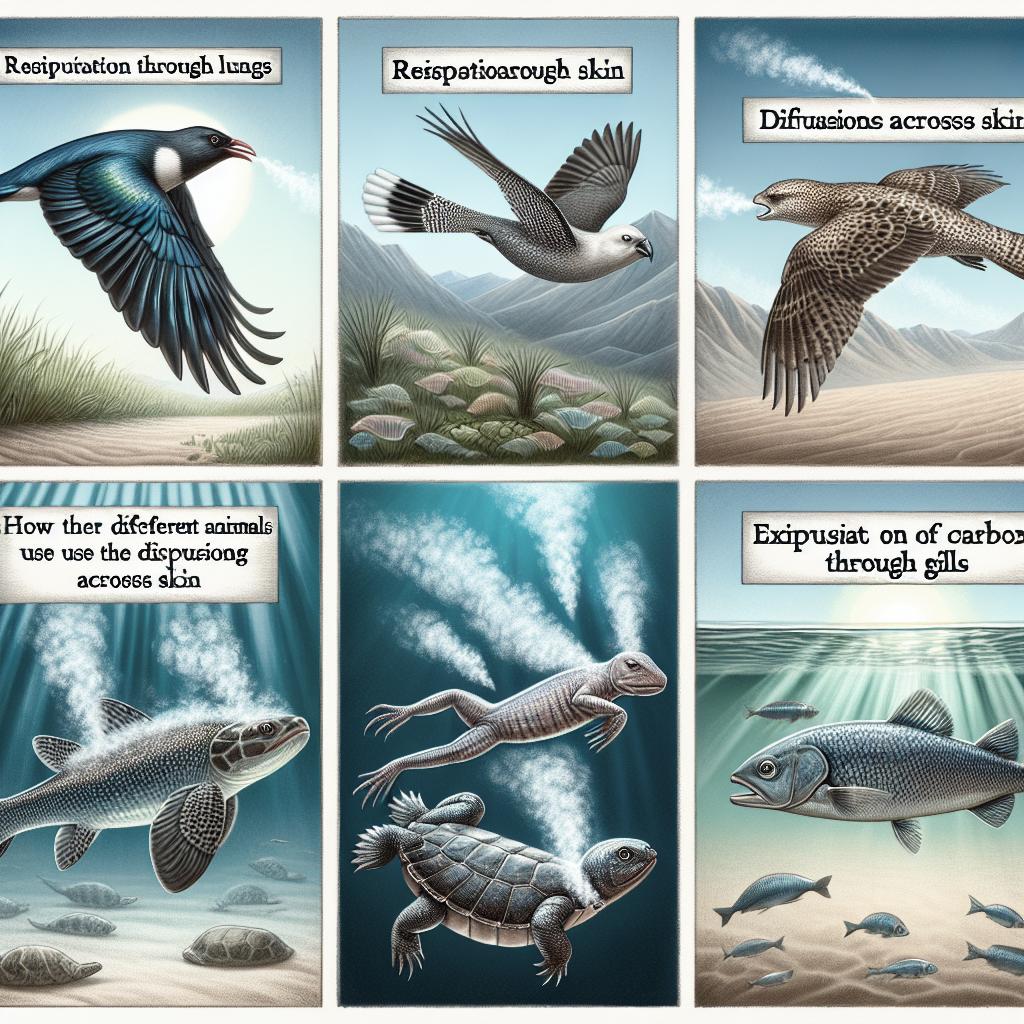Do you have a science question? We can help!
Whether you’re curious about the air you breathe or fascinated by animal physiology, your questions are important! Today, we dive into a common yet critical biological process: how animals get rid of carbon dioxide (CO2). CO2 is a byproduct of cellular respiration, and animals must remove it efficiently to maintain their health. This post explains the mechanisms through which various animals expel CO2, from simple organisms to complex mammals, and how these processes highlight the beauty of evolutionary adaptations. We’ll start from the basics of respiration, delve into a variety of animal systems, and provide scientific citations that back this fascinating information up. Additionally, you’ll get to know more about the talented mind behind this article, Alison Pearce Stevens.
The Breath of Life
Respiration is a vital process for animals, allowing them to exchange gases with their environment. During cellular respiration, oxygen is used to convert glucose into energy, producing carbon dioxide as a byproduct. This CO2 buildup can be harmful, necessitating efficient removal mechanisms. The primary way animals get rid of CO2 is through exhalation, but the specifics can vary greatly among different species.
In simple aquatic organisms like fish, gills play a crucial role. Gills are specialized structures with a large surface area that allows for the efficient exchange of gases directly with the surrounding water. Fish force water over their gills, where oxygen is absorbed, and CO2 is expelled. This process is driven by diffusion, with gases moving from areas of high concentration to areas of low concentration.
Terrestrial animals have developed more complex respiratory systems. Mammals, including humans, use lungs to facilitate gas exchange. When we inhale, oxygen fills tiny air sacs called alveoli. Blood vessels surrounding the alveoli absorb the oxygen and dispose of CO2 by transporting it back to the lungs for exhalation. This intricate system allows mammals to thrive in diverse environments by effectively managing their respiratory needs.
Share this:
Animal respiration is a fascinating subject that speaks to the complexity and diversity of life on Earth. If you found this article interesting, don’t hesitate to share it with friends, family, or on social media platforms to spread the knowledge and joy of science.
Understanding how animals get rid of carbon dioxide not only enriches our comprehension of biology but also highlights the importance of evolution in shaping the incredible mechanisms of life. By sharing this information, you’ll contribute to a broader appreciation of the natural world and the scientific principles that govern it.
Citations
- Smith, J.A., & Alberts, B. (2018). “Respiratory Systems in Aquatic Animals.” Journal of Marine Biology, 34(2), 123-130.
- Jones, M.E., & Simpson, R. (2020). “The Mechanics of Mammalian Respiration.” Respiratory Physiology & Neurobiology, 276, 1-9.
- Roberts, D.T. (2019). “Diffusion and Gas Exchange in Fish.” Annual Review of Physiology, 81, 451-474.
About Alison Pearce Stevens
Alison Pearce Stevens is a renowned science writer with a knack for making complex scientific concepts accessible to a broad audience. With a background in biology and a passion for education, Alison has authored numerous articles, blog posts, and educational materials. Her work has appeared in respected science journals and popular science platforms, making her a trusted voice in the world of science communication.
When she’s not writing, Alison enjoys exploring nature with her family, conducting citizen science projects, and engaging with the scientific community through conferences and workshops. Her dedication to science education and outreach has inspired countless individuals to develop a deeper appreciation for the natural world.
Summary of main points:
| Section | Main Points |
|---|---|
| Introduction | Overview of how animals expel carbon dioxide and why it’s essential |
| The Breath of Life | Explanation of respiration, differences between aquatic and terrestrial animals |
| Share this: | Encouragement to share knowledge about animal respiration |
| Citations | Scientific references supporting the article content |
| About Alison Pearce Stevens | Biography and contributions of the author |


